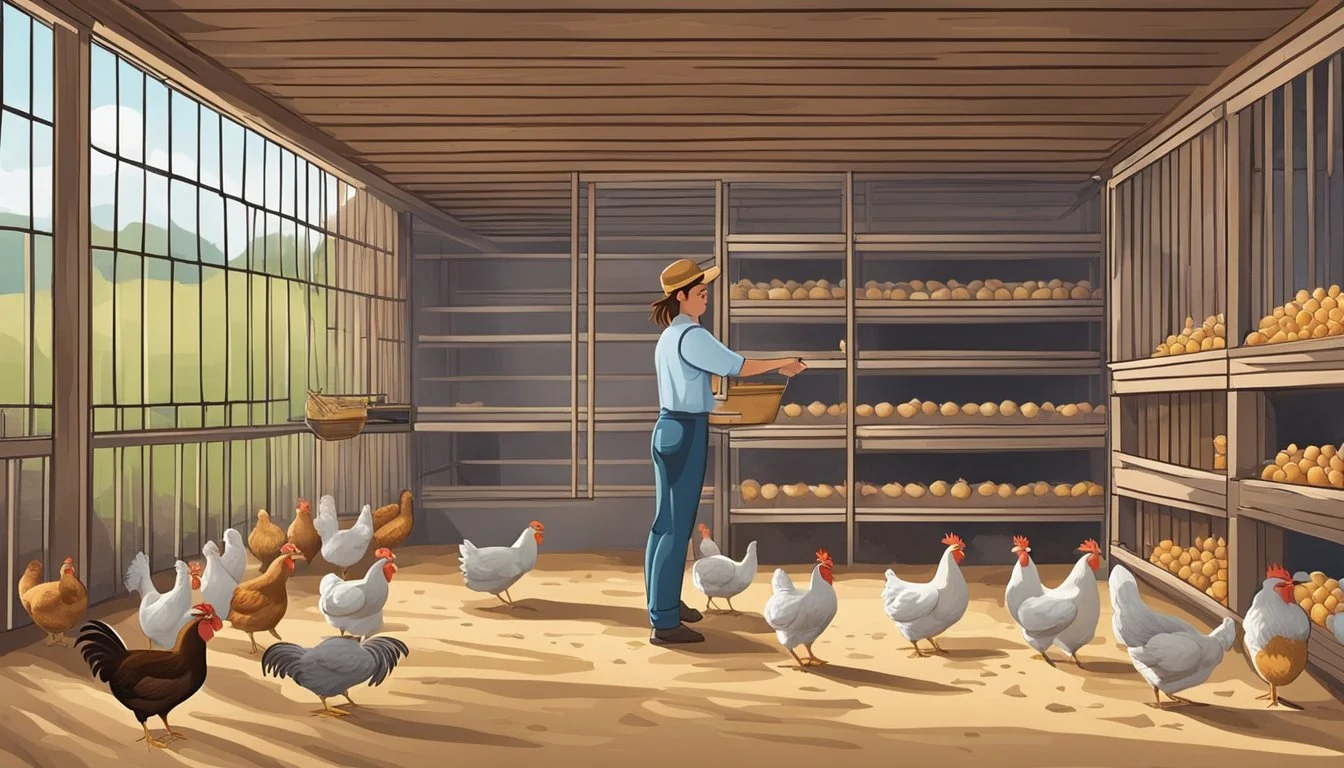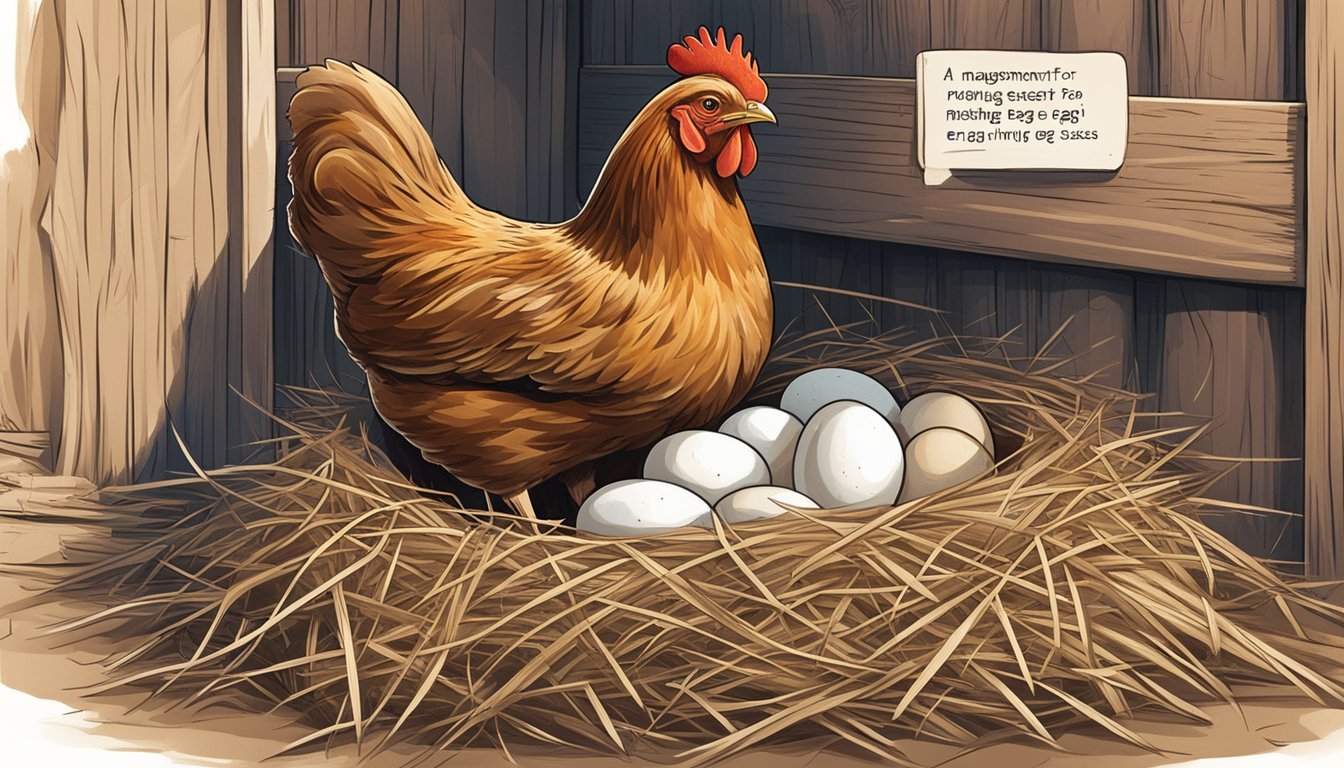How do I Manage Egg-Laying Issues
Expert Solutions for Healthy Hens
Managing egg-laying issues in chickens is a critical aspect of poultry farming that can impact productivity and animal welfare. Egg production naturally varies through a hen's life, starting when they are about 5 to 6 months old and typically peaking within the first year. As they mature, however, production declines. It is important for poultry keepers to understand the common problems that can arise and how to address them to maintain a steady supply of eggs.
Many factors can disrupt laying patterns, including stress, poor nutrition, illness, and inadequate living conditions. Stress, for instance, can be triggered by changes in their environment or the flock's hierarchy. Nutritional imbalances may stem from inadequate feed, while diseases can have a direct impact on a hen's ability to lay eggs. Proper lighting and comfortable temperatures are also necessary, as chickens require a certain amount of light each day to lay effectively and can be distressed by extreme temperatures.
By creating an optimal living environment and monitoring the health and nutrition of their flock, poultry keepers can encourage hens to lay more consistently. Ensuring that chickens have access to a balanced diet and clean, safe housing can help reduce the prevalence of egg-laying problems. Addressing these issues promptly not only supports the welfare of the chicken but also leads to improved egg production.
Understanding Egg Production
Egg production in laying hens is a complex process influenced by various factors including physiology, nutrition, lighting, genetics, age, and the environment.
Physiology of Egg Laying
The reproductive system of a hen is primed for egg production. The process begins in the ovary where ova develop into yolks. When a yolk is mature, it is released into the oviduct, where layers such as the albumen (egg white), shell membranes, and cuticle are added before the eggshell formed mainly from calcium carbonate is encased around the developing egg.
Egg Laying Process
The egg laying process involves the egg's passage through the hen's reproductive tract, culminating in the laying of the egg. The final stage occurs in the cloaca, where the egg is rotated and laid with the narrow end first. This entire journey from ovulation to laying takes approximately 24-26 hours.
Role of Nutrition
A hen's diet must be balanced, rich in protein, calcium, and vitamins to support optimal egg production. Proper nutrition affects not only the number of eggs a hen will lay but also the quality, including the strength of the eggshell and the nutritional content of the egg white and yolk.
Importance of Lighting
Lighting, especially artificial lighting, influences egg-laying patterns by stimulating the pituitary gland, which controls egg production. Hens require specific light wavelengths and durations to maintain consistent laying cycles.
Genetics and Selective Breeding
Genetics plays a critical role in a hen's laying capacity. Through careful selective breeding, certain traits like high egg yield and good shell quality have been enhanced in laying hens to optimize production.
Aging and Egg Production
As hens age, their egg production naturally declines. This change is often noticeable after the hen passes her peak production period, which is typically within the first couple of years of life.
Environmental Impact on Laying
Environmental factors such as temperature, humidity, and stress can have a significant impact on laying frequency and egg quality. Consistent and comfortable conditions tend to support better laying patterns.
Understanding these aspects of egg production is crucial for managing egg-laying issues effectively.
Common Egg-Laying Issues
When addressing egg-laying concerns, it's important to identify the specific issue affecting poultry. Ranging from shell quality to behavioral factors, these issues can have various sources including nutritional imbalances and environmental stressors.
Eggshell Quality and Problems
Eggshell quality is paramount for the protection and viability of an egg. Issues such as soft eggshells or a compromised shell membrane can result from deficiencies in calcium or other minerals. Eggshell problems can lead to breakages and contamination, impacting the health and productivity of the flock.
Abnormal Egg Conditions
Poultry can produce eggs with abnormalities, such as lash eggs, which are symptomatic of egg yolk peritonitis, or egg binding, where an egg gets stuck in the reproductive tract. These conditions require prompt attention to prevent more serious health issues.
Physiological Disorders
Disorders like stress can suppress the reproductive system, leading to irregular egg-laying. Stress can be caused by disease, poor environment, or inadequate space, among other factors. Minimizing stress is crucial for maintaining a healthy laying cycle.
Nutritional Imbalances
Proper nutrition is essential for consistent egg production. Imbalances, particularly a lack of calcium or protein source, can lead to reduced egg quality and laying performance. Offering a balanced diet helps in preventing nutritional imbalances that affect egg quality.
Behavioral Issues
Behaviors like pecking and broodiness can influence laying. Egg-eating by chickens can be a response to calcium deficiency or lack of stimulation. Implementing behavioral management practices helps in mitigating these issues.
Environmental Challenges
Lastly, environmental factors such as the layout of coops and the comfort of nest boxes play a role in egg-laying. Stressors from the environment, including temperature fluctuations or inadequate lighting, can lead to inconsistent laying patterns and require environmental adjustments to resolve.
Management Strategies
Effective management of egg-laying issues often involves a combination of diet, environmental modifications, and attention to the health and behavior of the flock. Strategies should focus on specific areas such as optimizing diets for sufficient calcium and protein, creating ideal environmental conditions, and ensuring the flock's overall health and biosecurity to address and prevent common egg-laying problems.
Diet and Nutrition
A balanced diet is critical for optimal egg production. The diet should include ample calcium and protein, which are essential for eggshell quality and reproductive health. Incorporating high-quality chicken feed with a blend of vitamins and minerals can promote consistency in laying. Regularly provide fresh, clean water as dehydration can negatively impact egg production.
Environmental Optimization
The environment of the coops and nesting boxes plays a pivotal role in egg-laying. Ensure that nest boxes are clean, private, and easily accessible to prevent stress and egg eating. Adequate lighting stimulates the release of hormones like FSH and LH, which are necessary for consistent laying. Moreover, temperature control and ventilation prevent stress that can disrupt laying patterns.
Flock Health and Biosecurity
Maintaining flock health and well-being involves regular monitoring for signs of diseases and implementing strict biosecurity measures. Preventative measures such as vaccinations, parasite control, and minimizing exposure to wild birds reduce the risk of illness. Addressing behavioral issues like pecking ensures a peaceful environment that supports regular egg production.
Behavioral Interventions
Address behavioral issues that may affect egg production by implementing flock management practices. Reducing pecking can be achieved through environmental enrichment and maintaining a proper flock size. Avoid overcrowding as it can lead to stress and consequent laying issues. Observing the flock's behavior enables timely identification and correction of problems such as egg eating or disappearing eggs.
Reproductive health
Regular reproductive health checks help identify and address egg laying problems related to the reproductive system. Hormones like estrogen play a significant role in egg development, so disruptions in hormonal balance need to be addressed. By understanding and monitoring the intricacies of the hen's reproductive health, one can better manage and treat egg laying issues.
Maximizing Egg Production
When focusing on egg production, poultry farmers can implement several practices to enhance the output of their layer hens. Good management is paramount for maximizing egg production without compromising the health and well-being of the livestock.
Firstly, a balanced diet rich in proteins, vitamins, and minerals is crucial. Farmers should ensure that feed formulations meet the specific nutritional needs of egg-laying birds, which can vary by breed and stage of lay.
Appropriate lighting plays a significant role, as layer hens are influenced by the length of daylight. Maintaining a consistent light schedule that mimics natural daylight hours can encourage hens to lay more efficiently.
Creating a stress-free environment is also essential. Measures include:
Providing ample space to prevent overcrowding
Ensuring proper ventilation to maintain air quality
Offering clean and soft bedding, such as straw or wood shavings
Following these steps can lead to better egg production, as stress can greatly impede the egg-laying process. Additionally, maintaining a clean and safe coop is necessary to prevent diseases, which can affect egg production and the overall health of the flock.
Monitoring and maintaining the optimal temperature within the coop will help in keeping the hens comfortable and productive. Extreme temperatures can lead to decreased egg production.
In summary, by providing a balanced diet, consistent lighting, stress-free environments, and disease prevention strategies, farmers can effectively increase egg output. For an in-depth guide on the egg production cycle and management, enthusiasts may refer to this guide to better layer egg production. Understanding the factors that influence egg-laying can enable poultry farmers to optimize their practices for the benefit of their flocks and businesses.
Conclusion
Managing egg-laying issues is crucial for maintaining the well-being of poultry, whether in backyards or free-range systems. They should monitor their flock for signs of distress, nutritional deficiencies, or illness that can disrupt egg production. Regular check-ups and maintaining a stress-free environment contribute to consistent laying patterns.
Effective management involves:
Ensuring a balanced diet rich in calcium and essential nutrients.
Providing adequate space and nesting areas.
Implementing preventative health measures to ward off diseases.
By tackling challenges proactively, one preserves the health of their flock and secures a steady supply of eggs. This, in turn, leads to a successful and rewarding poultry-keeping experience.




